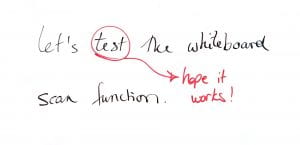It’s February, which means it has been almost a year since the world changed. On March 13 2020, our campuses closed, and since then, most university business—teaching, research, administration, fundraising—has happened “virtually” (more on my problems with that term later). All classes were cancelled for one week, to give teachers time (ha!) to make the transition to teaching remotely.
Pandemic panic
Initially, most of our panic was focused on the tech—would we have full licenses for the platforms? Did we have the hardware we needed (think back—this was a really big challenge in Spring 2020, when the entire world moved from workers in office towers to a massive work-from-home directive, which means literally millions of people who suddenly needed computers, and all the related peripherals, for their home offices, and retailers just didn’t have the stock.) Parents needed space and hardware to support children learning at home, while carving out space and finding hardware for themselves, to continue working.
There are several things that I was grateful for, as we all faced this unprecedented shift. First, my partner, our kids, and I are tech savvy, and we already each had our own computer, and most of the required equipment to support our working and studying at home. We had reasonably reliable Internet access (we have actually upgraded, but given that it took almost three months from making the call to getting the installation, I’m glad we had workable Wi-Fi to begin). Perhaps most importantly, we have a big house, and each person has plenty of personal space.
Wired in haste, repent in leisure
As a teacher, I have always been excited about using tech to support my practice, so the idea of teaching online wasn’t as daunting to me as it has been for some. I definitely had concerns, though. The mindset in the spring was “let’s just get through this.” As individual instructors, and as an institution, we did our best to finish the term but made it pretty clear that as long as students demonstrated a minimum of engagement, we would essentially give everyone the benefit of the doubt and grade accordingly. We had enough time to rethink final assessment scenarios, but we were close enough to the end of term that we could just limp to the finish line.
For the fall term, though, I had other concerns. I worried about how to structure prerecorded lectures, and how to make them available while not making them too available. I worried about retention and attrition—would students come back, after the confusion and panic of the spring, and would they stay in courses if they did? How could I create a sense of classroom community—in March, when we met online, we had already been meeting in person for several weeks. I knew their names, faces, and voices, and they knew each other. We had a rapport, and they had come to know my style. How could I recreate that sense of connection when we were online from Day One? How could I create trust?
What I didn’t know I didn’t know
Perhaps not surprisingly, there were also dozens of challenges that I didn’t anticipate. The biggest challenge at the outset was the steep learning curve when it came to the tech. I had spent the summer learning how to navigate Teams, and I attended several yoga teacher trainings via Zoom, and learned a ton of dos and don’ts for synchronous teaching and learning—breakout rooms are great, screen shares that hijack your screen are awful—so I felt ready for the fall term. I felt quite foolish when it became apparent in the first week or two that my students were not at all familiar with these platforms, and were overwhelmed trying to navigate them. It certainly didn’t help that different teachers were doing different things—in person, this is also true, but somehow when we moved everyone online, the different approaches just added to student confusion.
One indirect consequence of the tech learning curve and the different teaching styles was that students perceived their workloads as significantly heavier than a “normal” course load. This perception was validated by the fact that, in keeping with guidelines from our administrators, teachers were splitting large evaluations into multiple smaller evaluations. So, instead of two essays worth 50% each for a lit course, students were asked to write four essays worth 25% each. The idea was smaller assignments would be easier to manage, and more frequent assessment would encourage engagement. The reality was that students felt the same pressure for a weightier assignment, but had more of them, and had to figure out how to conduct research, work collaboratively, seek feedback, and submit work entirely online.
There were other, smaller, challenges that I had not anticipated. In my freshman Composition course, the default for students was to keep their cameras off. In my Professional Writing course, about half of the group kept their cameras off, while the rest had them on most of the time. I never insisted on having cameras on, although I did encourage them to turn cameras on for breakout rooms, and most of them did. Interestingly, this winter, there are many more cameras on; it seems that the need to feel seen and be part of a community now outweighs the desire to remain anonymous. Someone should definitely do a psych paper on this!
I’m glad cameras are more frequently on now, because one of the unexpected challenges in the fall was not seeing faces—not because I don’t like looking at all the black boxes, but because I rely on non-verbal feedback as a teacher. Are students keeping up? Are they interested? Are they confused? Bored? Asleep? (I have had at least one instance when I call on someone whose camera is off, only to discover that they’re just not there.)
I also felt a little lost without my whiteboard and markers. I use the board pretty frequently, both to record important concepts as I’m lecturing and to illustrate my thought process when answering questions. I’m no artist, but visualizing what I’m thinking helps me explain it. And the whiteboard thought process is really just part of the larger physical aspect of the classroom experience—I stand, and often pace, while I’m talking, and I wander through the classroom while students are working. So teaching statically, with no whiteboard, felt awkward and inauthentic. I tried a few hacks, the most ridiculous of which was a complicated stand to suspend my phone over the desk so I could write and have the camera record; ultimately, I got an actual whiteboard, retrieved my markers from my campus office, and bought a massive easel so I could move the whiteboard into position behind me.

I bought a set of four “beacons” that create a digital perimeter around the whiteboard, which allows me to cast the board to my phone, or even livecast it to a URL, refreshed every few seconds, so students can follow, and even save, my notes. I have ended up not using the board as much as that description warrants, but it’s nice to know it’s there.
Silver linings
While there have been myriad challenges in shifting, however temporarily, to teaching remotely, there have also been some genuine epiphanies. There are certain aspects of teaching “virtually” that have proven to be very effective, and some things I was already doing in person that have been improved and strengthened through being adapted for the online classroom.
I discovered early on that most students prefer synchronous sessions. I stopped doing prerecorded lectures after week four of the fall term, and now only do recordings of procedural things, such as a screenshare of how to set up formatting in a document. Everything else, we do in real time. I do keep class time to less than the scheduled time, generally, because I’m asking students to do a lot of collaborative work. Students work in the same small group for the term, and are responsible for determining the conditions for that collaborative work—do they meet once a week or more, or less; do everything individually or work on things simultaneously; use Google Docs or Teams; and so on. This more structured approach to group work is something I will definitely bring with me back into the classroom, and I’ll continue to give groups space in the virtual environment for collaboration.
One aspect of group work that works really well online is sharing results. So, groups go off into the breakout rooms to work on a task, then we reconvene, and each group has a chance to report on their discussion. More and more, students are sharing their screens with the class, so we can all see firsthand their notes, their process, and their results. I’m hoping to find a way to enable this sharing once we’re back on campus, without having to book all my classes into computer labs! Screensharing has also been really effective in one-on-one meetings with students. Holding office hours online is, I suspect, one of the aspects of the current situation that will stay with us post-pandemic. The online office hour is more convenient for everyone involved, and we can see a shared file without all the awkward tilting of monitors and shifting of chairs.
I’ve noticed that this term, there is a lot less tech stress. Most students, especially those who were in one of my fall courses, are now familiar with the different platforms, and have figured out their best home set-up, so we can get right into the course material without spending a week or more just navigating the systems and making sure everyone’s connected. For my Professional Writing students especially, crossing that online work threshold is something that will serve them well in the workplace, a benefit of which they are indeed aware. In fact, I’m working on incorporating navigating online platforms and collaborative work into the learning goals for the program. When the next pandemic drops, we’ll be ready.




